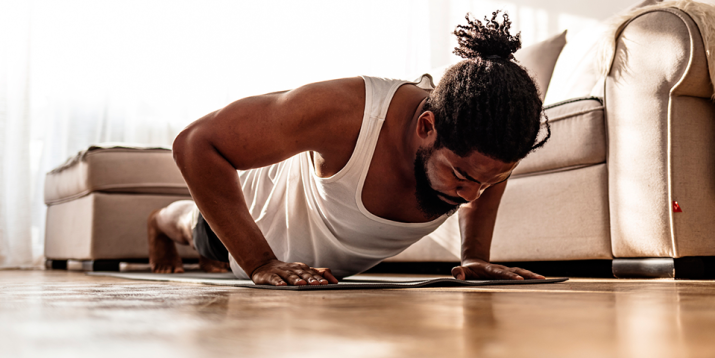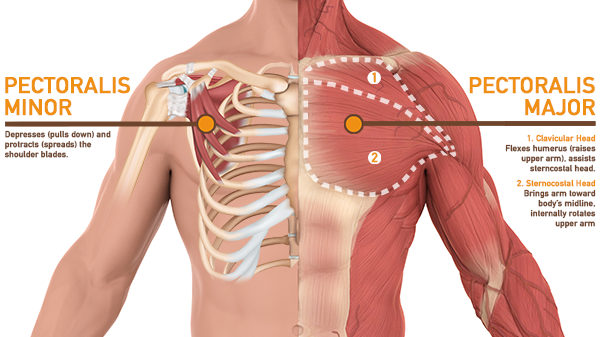How to Master the Plank Push-Up (Plank Up Down)

It’s hard to think of a better exercise than the push-up. You can do it virtually anywhere. You can make it harder or easier with a simple shift of hand or foot placement. It’s a proven upper-body muscle and strength builder.
And with just a little tweaking, you can make it a killer core move: Enter the plank push-up, or the plank up down. As the name suggests, the plank push-up is a mash-up of the classic push-up with the core-building plank.
For people who find planks or push-ups too easy, or boring, plank up downs add challenge and complexity. Here’s how to nail your form every time.
Plank Push-Up (Plank Up Downs): Step-by-Step Instructions
- Assume a plank position: forearms, palms, and the balls of the feet on the floor, body straight from your heels to the top of your head. Your feet should be shoulder width, your fingers spread wide, and your forearms parallel.
- Without shrugging your shoulders toward your ears, or letting your hips sag or lift, shift your weight to your left and place your right palm flat on the floor below your right shoulder.
- Still maintaining a perfectly straight body, shift your weight right, place your left hand flat, and straighten both arms to assume the top-of-a-push-up position.
- Reverse the move, lowering your right forearm and then your left forearm back to the plank position, keeping your body straight the whole time.
- Repeat the movement, this time placing your left hand in push-up position before your right hand. After both hands are in push-up position, lower your left arm to plank position before your right arm.
- Continue the movement, alternating the arm that initiates the move on each rep.
How to Make Plank Push-Ups Easier
If plank up downs are beyond your capacities at the moment, don’t sweat it: It’s easy enough to lighten the load. Here’s how:
- Master the elements. Before you attempt the plank push-up, you need to be a pretty accomplished plank-er and push-upper first. Work those two basic moves — make sure you can hold a plank for 30 seconds and perform at least ten strict push-ups independently — before combining them.
- Do the step-down version. In this version, start in an elevated plank — with your elbows elevated on a six- to eight-inch aerobic step and step your hands off the step (to either side of it) to get into push-up position.
- Work hands-up. Perform the move with your elbows elevated on a 12- to 18-inch box or step.
How to Make Plank Push-Ups Harder
- Perform a commando jack. Secure a resistance loop around your ankles and kick your legs out to the side at the bottom of the movement for an extra cardio burn.
- Toss in a push-up. Once in the push-up position, perform a full tricep push-up with good form on every rep. “Place the hands just outside your chest, so as you descend, your body creates the shape of an arrow with your elbows pointing to about 45 degrees relative to your torso,” says Cody Braun, CSCS.
- Work feet-up. Perform the move with your feet elevated up to 18 inches.
- Add weight. If you have a weighted vest, wear it while performing the move, or have a partner place a barbell plate on your back (and spot you to make sure it doesn’t fall off) as you perform the move.
Benefits of the Plank Push-Up

Plank push-ups offer all the benefits of both push-ups and planks:
- More muscle and strength in the chest (pectorals), shoulders (deltoids), and the backs of your arms (triceps),
- A stronger anterior core (rectus abdominis)
- A stronger transverse abdominis (deep core muscle)
- An enhanced ability to stabilize your spine during active movement
1. They show you where you’re weak
“Plank up downs can quickly show you where your body is lacking strength depending on what area of the body you notice movement compensations,” says Braun.
- If your hips sag, your transverse muscles and anterior core (your six-pack muscles) need work.
- If you struggle to push yourself out of the bottom position, it’s your chest and shoulders that are lacking.
- If your hips poke upward, your glutes and hips likely need attention.
2. They add complexity
Planks are an isometric (static) exercise: You assume a stationary posture, stabilize the core, and hold it till it hurts. But life isn’t static.
We’re constantly reaching, bending, stepping, running, and moving, and if you can’t stabilize your torso while you do all that, you’ll fall down — or pull something — pretty quickly.
Plank push-ups force you to stabilize your spine while you move — a key life skill, and a key function of the core musculature.
3. They teach you how to twist
The plank up down teaches rotary stability in the core. The standard plank forces your core to resist overextension — or overarching — in the lower back.
Add the one-arm-at-a-time up-and-down component of the plank push-up, and your core has to create rotation, and resist over-rotation, much the way it does when you walk, sprint, or perform dynamic sports movements like swinging a tennis racquet or throwing a punch.
Work the move and you’ll reduce the likelihood of injury during all manner of athletic movements.
